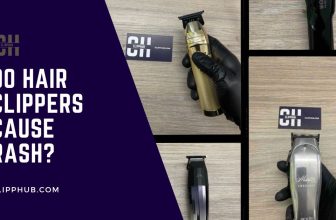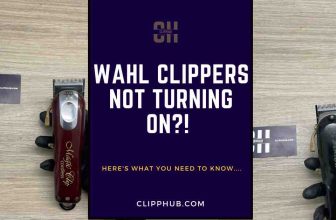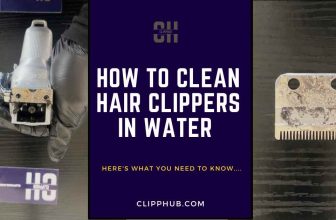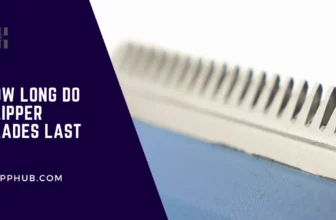
Alcohol can be a great disinfectant for your hair clippers, but is it the only solution for clipper blades?
Well in this article we will go over the process of how to clean your hair clippers without alcohol.
The solution I provide may be a bit bizarre but can get the work done.
So… with that said, take a look at the table of contents, and let’s begin.
How To Clean Hair Clippers Without Alcohol
This is a quick walkthrough on how to disinfect your clippers with vinegar without removing your blades.
Further down in this article, I also provide a guide on how to do a deep clean when your blades are off.
Let’s start.
Brush in the direction of your blades to remove as much hair as possible.
Make sure the vinegar only covers the teeth of both blades, no further.
Allow your clippers to run for 10-20 seconds or until most hair and debris have left your clippers.
You will see hair drop from around the blade teeth as the vinegar cleans your blade teeth.
Oil your hair clipper blades.
Watch the Full Process Below
How to Clean Clippers Without Alcohol
Vinegar does have a strong smell to it, so be sure to let your blades sit for a while to let the smell waft away.
This method saves you the trouble of removing your hair clipper blades, however, it does not provide as deep of a clean as the method I provide further down below.
While both might be great alternatives to clean your clippers, I would still recommend you use disinfectant made specifically for your clippers. Here are my top recommendations.

Andis Cool Care Best OVERALL
Clippercide Spray DEEP CLEANER
H-42 Barber Spray Best Solution Based spray
I go further in-depth on my choices in my best clipper disinfectant guide.
But if you are still after an at-home alternative, read on.
Cleaning hair clippers with distilled white vinegar

Cleaning clippers are vital. The amount of build-up that takes place in your hair clippers can be frightening.
I mean.. take a look at this:
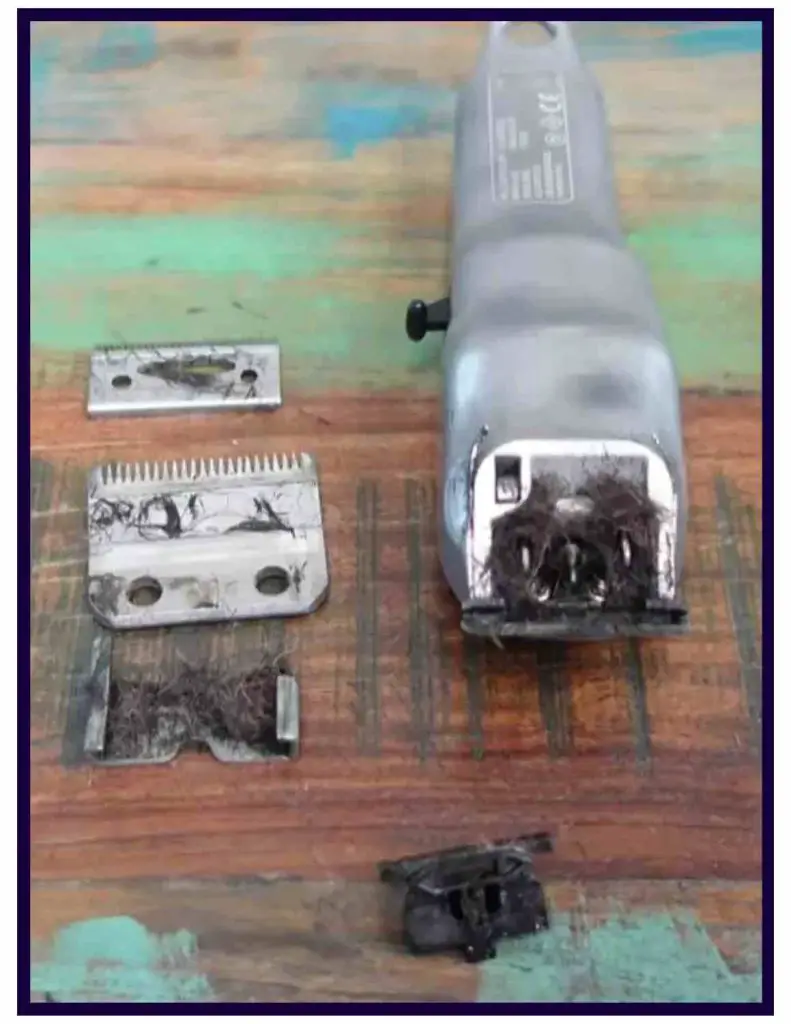
Not a pleasant site. Could your clippers be like this internally?
Well if they are, I later provide the steps you can implement to deal with this mess.
However, for now, you must understand the effect of vinegar on hair clipper blades, being confused on this topic could be very dangerous for your blades.
So, modern hair clippers are primarily made up of stainless steel.
Stainless steel contains 12-30% chromium and it is a passivity layer that acts as a shield against corrosion. this layer blocks oxygen from getting into the steel’s surface.
Nice right, but sadly, vinegar can slightly ruin this.
You see, vinegar can work against stainless steel blades and actually can cause corrosion on your blades.
But this is only likely if you leave your blades in vinegar for a very long time… I expand on this next.
You just have to be wary of how much vinegar you use on your hair clipper blades.
However, the benefits vinegar has on the waning blades are amazing and very underrated.
But which type is the best for your clippers?
I talk about that next.
White distilled vinegar vs. cleaning vinegar
Which vinegar you use is quite important. It somewhat depends on how sterile you want your hair clipper blades.
But before you start throwing vinegar on your blades, keep this in mind…
As I previously mentioned, vinegar’s acidic nature can corrode stainless steel, so it works well when you dilute it with water.
Vinegar is a mild acid, and it can potentially corrode stainless steel if it is left in contact with the steel for an extended period of time.
However, stainless steel is a very corrosion-resistant material, and it is unlikely to be significantly affected by vinegar in a short amount of time.
With that said, the two types of vinegar you should be using to clean your clipper blades would be white distilled vinegar and cleaning vinegar.
To know the vinegar you working with, always check the product label to see how acidic the product is.
This is the best ratio to work against your clipper blades without damaging your clipper blades.
White distilled vinegar is common and is frequently found in homes.
Opt for this vinegar when you clean your clippers.
Cleaning vinegar
Cleaning vinegar is the next best option.
Although cleaning vinegar is stronger than white vinegar it isn’t too much concern. Cleaning vinegar in fact can clean your blades better than white vinegar.
Cleaning vinegar easily gets rid of grime and is fantastic and killing germs and bacteria. You just have to remove it from the solution sooner.
Cleaning vinegar does also leave a slightly harsh smell on your blades but that wears away over time.
Industrial vinegar
Keep this type of vinegar away from clippers!
Industrial vinegar is 20% acidic. This is far too powerful and while your stainless steel blades can resist the corroding effect of vinegar, This vinegar will just churn through that protection.
Industrial vinegar contains strong sulfuric acid and is used in pesticides to kill insects and pests. yes, live creatures.
If consumed your life will risk and if used on your blades, they too will be in trouble.
As I said. Always check the contents of the vinegar you’re going to use it should have an acidic percentage of 5-7% more.
Now you know which vinegar to use on your hair clippers. You can begin to clean them.
We cover that next.
Cleaning Hair Clippers With White Distilled Vinegar
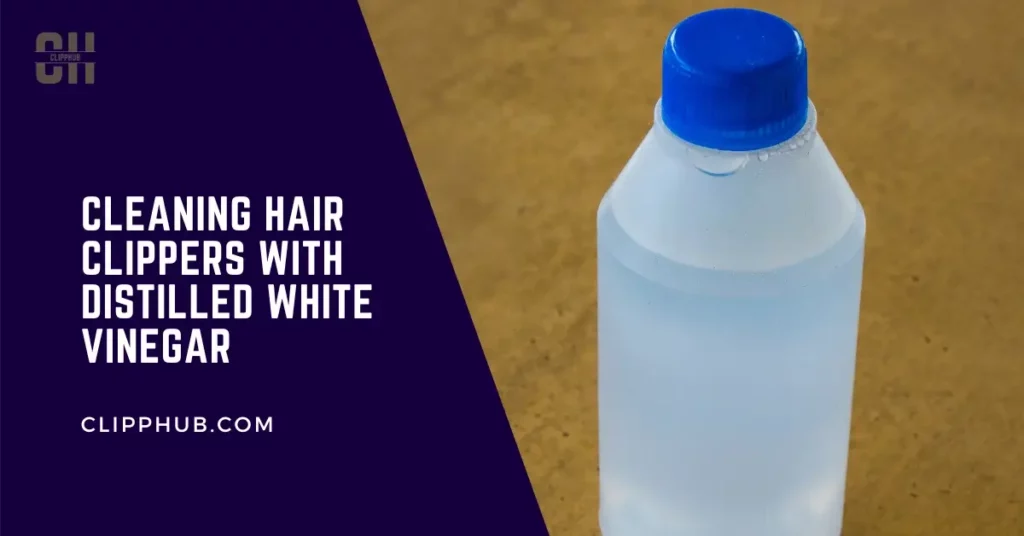
For this cleaning process you will need:
- A brush
- Toothpick
- Plastic tub
- Cloth
- Hair clipper oil
- Vinegar
How to Clean Hair Clippers at Home
Step 1: Unscrew
detach hair clippers. ( keep screws and bolts in a safe place they will be needed later).

You will notice two blades, The first blade is the front cutting rail blade remove that first. Then you will be met with the top cutting blade, remove this next.
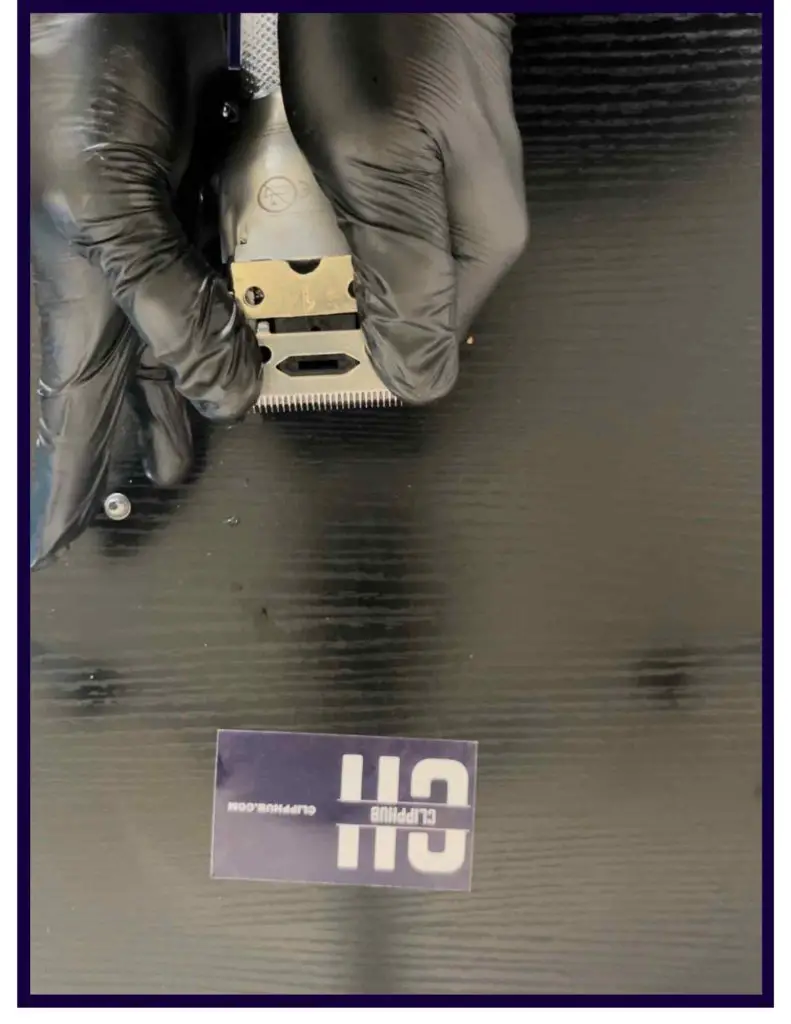
Step 2: Place
Take both blades and place them in a plastic tub.
Step 3: Vinegar
Pour the correct vinegar into a flat plastic tub.
It should be enough to cover both the teeth of the top cutting blade and the front rail blade.
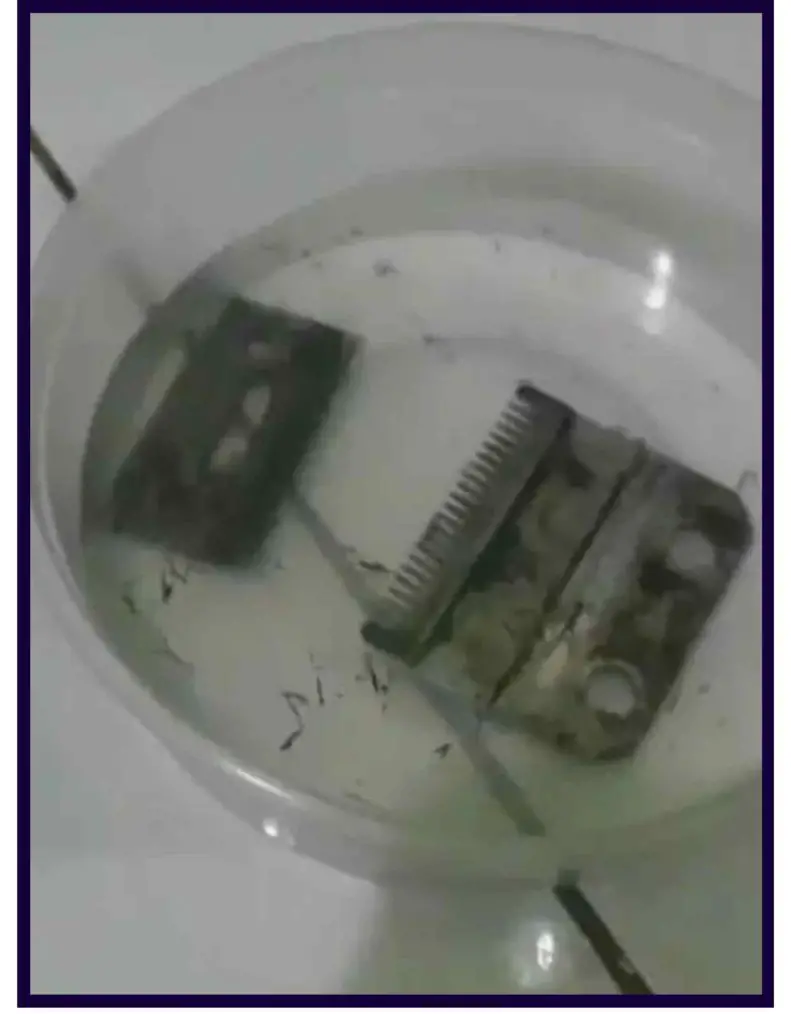
Step 3: Clean
Let them sit in the vinegar for 1-2 minutes to allow the vinegar to get underneath the dirt on your blades.
After this time has passed remove your blades from the solution and solution and pat them down with a cloth.
If you notice any extra hidden dirt on your blades using a cloth, dip it into vinegar again for a few more minutes then scrub down with or cloth or soft brush.
Now quickly run your blades underneath the water and dry them thoroughly.
Although they may be stainless steel blades, you still don’t want any moisture to remain on your blades.
Afterward, let them sit and dry off.
Step 4: Inside
If your clippers do look like this:
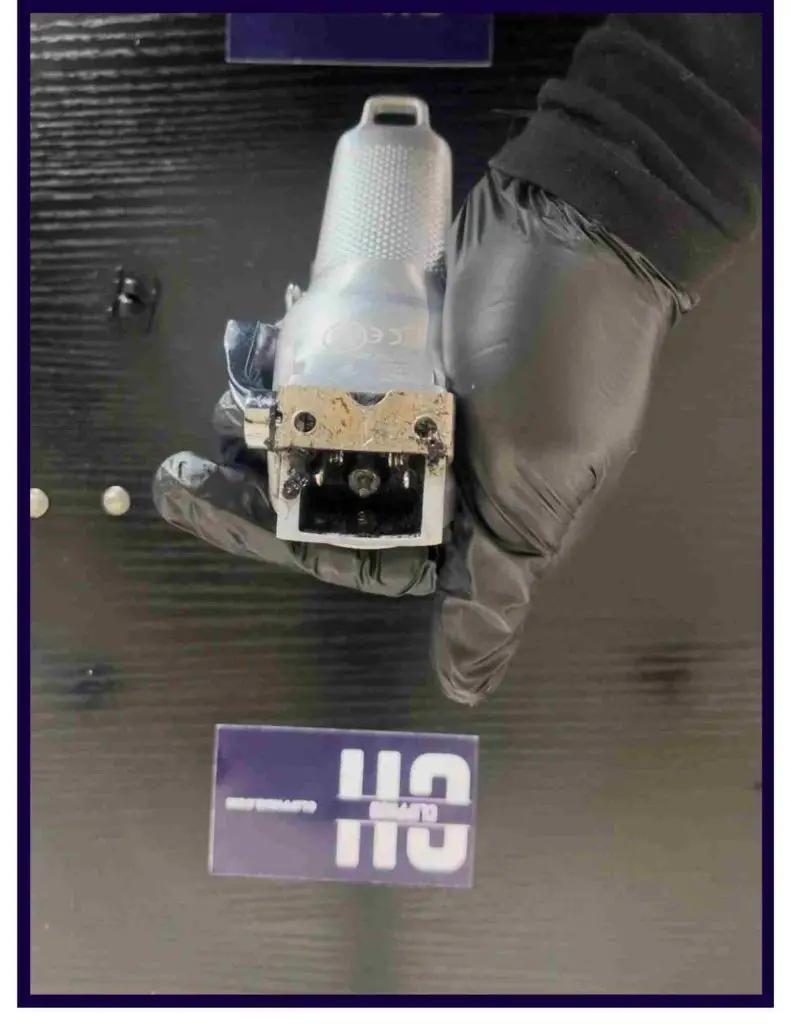
Using a hard bristle brush or toothpick, get to cleaning inside your hair clippers.
Use a toothpick or a hard bristle brush/ air can to get inside your clippers and pick out all of the clogged dirt and hair.
These bits must be removed.
It has to be a manual process, do not put water or vinegar inside your clippers!
Step 7: Re-attach
Once both your blades and your clipper are clean, you can re-attach your blades back onto your clippers.
Put your clipper blades back onto the setter.

Then palace your front rail blade on top making sure the holes for both line screws line up
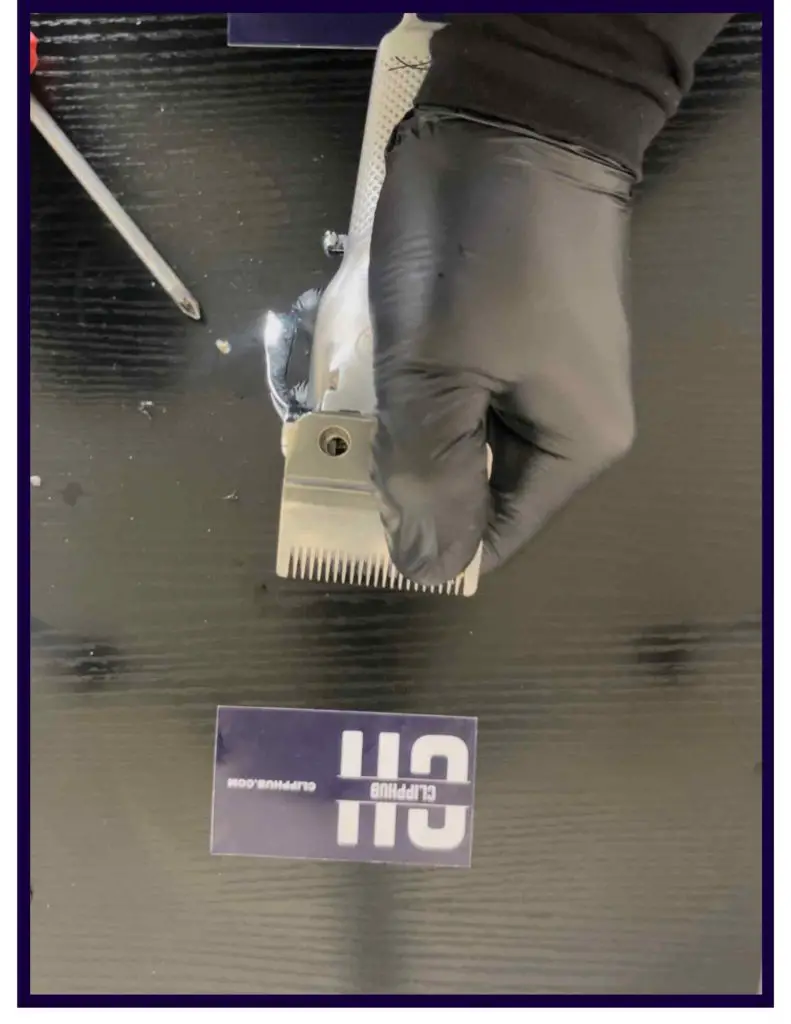
Now, individually put your screws back into the hole gap, and using your screwdriver, screw your blades back together but not fully as you have to make sure the alignment is correct.
Step 8: Align

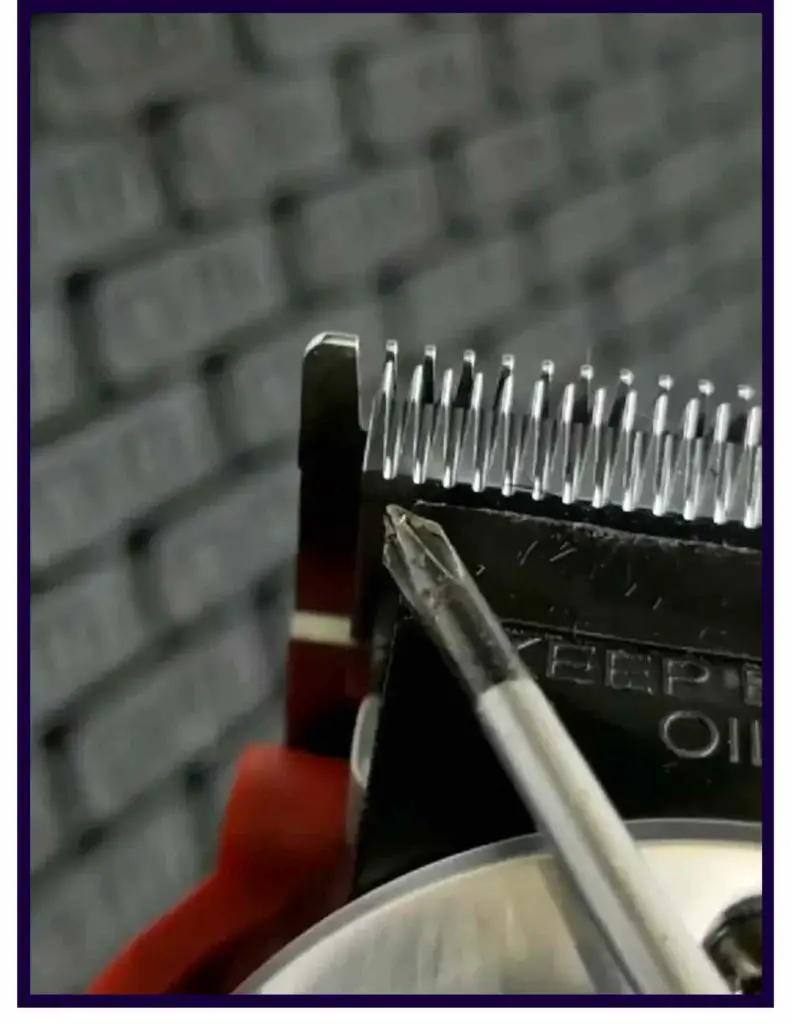
Always make sure the first tooth of the clipper is lined up with the second tooth of the front cutting rail and the last tooth of the front cutting blade is just on the inside of the last tooth of the front cutting rail.
Move the front cutting rail to make these adjustments, not the top cutting blade.
Make sure the top cutter is also as straight as possible.
When done. Screw your blades firmly back together.
Step 9: Oil
Once your blades are put back together, use hair clipper oil. Apply oil to your blades in the areas shown below:

Once done turn your clippers on and work the oil into blades by opening and closing the lever for 20 seconds.
Afterward, wipe away any excess oil.
Just like that, your hair clippers are now clean by simply using vinegar.
Conclusion
In this article, we went with an alternative of how to clean hair clippers without alcohol.
You should now understand which vinegar you can use on your blades:
- Distilled white vinegar
- Cleaner vinegar
And you also know which to avoid:
- Industrial vinegar
The steps laid out, guide you to easily clean your blades to have healthier clippers.
If you have found this article helpful on how to clean hair clippers without alcohol, please look at other articles such as how Clean hair clippers with hydrogen peroxide









